Table Of Contents
Introduction
In this section, we’ll explore some essential information about Coral Beads (Sedum stahlii), a fascinating succulent plant that enchants gardeners with its beauty and easy care. It’s crucial to understand the importance of providing proper care for this plant to ensure its healthy and long-lasting growth in your garden or green space. Let’s dive into this verdant world and discover the secrets behind the beauty of Coral Beads.
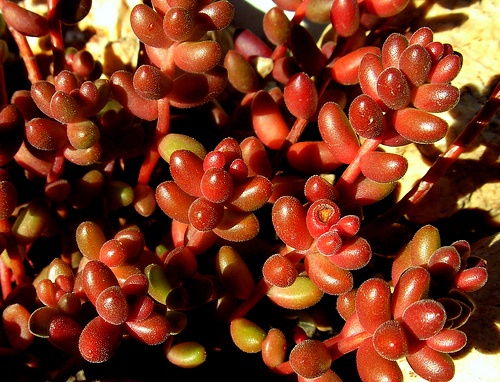
Get to know Coral Beads
Coral Beads (Sedum stahlii) is an enchanting succulent known for its distinctive physical characteristics. Its leaves are fleshy and thick, arranged in compact rosettes, giving it a unique appearance. Generally, the leaves are dark green, but can turn a shade of gray or blue under certain conditions.
Originally from the mountainous regions of Mexico, Sedum stahlii is adaptable to different growing conditions. This succulent plant can thrive both indoors and outdoors, as long as it receives the right amount of sunlight and is planted in well-drained soil. Its ability to adapt to a variety of climates makes it a popular choice among gardeners all over the world.
1. Adequate sunlight
Sunlight plays a crucial role in the healthy growth of Sedum stahlii. This succulent thrives when it receives direct or indirect sunlight for several hours a day. Adequate exposure to sunlight helps the plant develop its characteristic coloration and maintain its compact, healthy shape.
It is important, however, to protect Sedum stahlii from excessive sunlight, especially during the hottest months of the year. In very hot climates, intense sunlight can cause burns to the plant’s leaves. Therefore, it is recommended to provide partial shade during the hottest hours of the day or move the plant to a location with indirect sunlight to protect it from this damage.
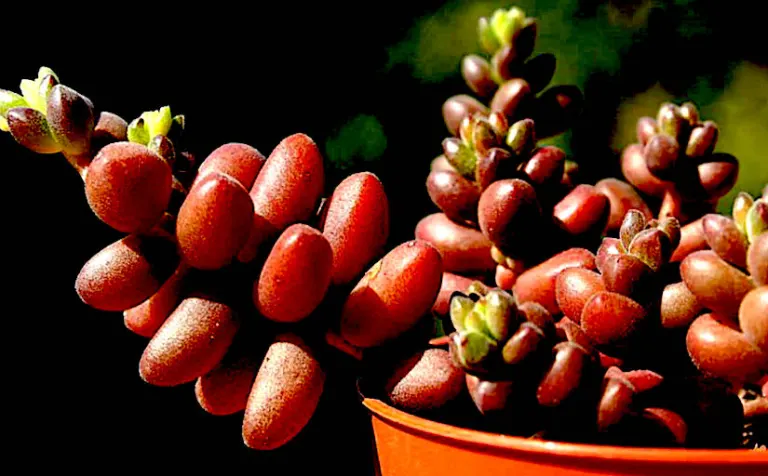
2. Watering and drainage
To keep Coral Beads healthy, it is essential to adopt a balanced approach to watering. Avoid both underwatering and overwatering, as both can be harmful to the plant.
Water Sedum stahlii when the soil is completely dry, which is usually every 7-10 days, depending on environmental conditions. When watering, make sure that the water reaches deep into the roots, but avoid leaving the soil waterlogged, as this can lead to root rot.
In addition, it is essential to ensure that the soil is well-drained to prevent water accumulating around the roots. A porous substrate, such as a mixture of cacti and succulents, helps to promote efficient drainage, avoiding rotting problems and maintaining the health of Sedum stahlii.
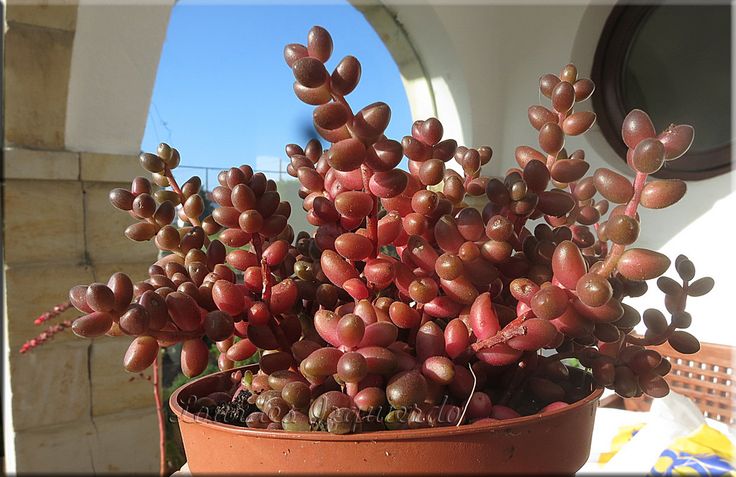
3. Temperature and environment
For Sedum stahlii to thrive, it is important to provide it with a suitable environment in terms of temperature and climatic conditions. This succulent is native to mountainous regions of Mexico, where temperatures tend to be moderate and summers are hot and dry.
Ideally, Sedum stahlii prefers temperatures between 15°C and 25°C during the day and slightly lower at night. However, it can tolerate higher temperatures if there is good ventilation and protection from the scorching sun. During the winter, it is important to protect the plant from frost and temperatures below 5°C, as it is not resistant to extreme cold.
To protect Sedum stahlii from extreme weather conditions, such as excessive heat or intense cold, you can consider using temporary shelters, such as greenhouses or garden covers, during the most challenging periods. Also, avoid placing the plant in cold draughts or places with extreme temperatures, as this can damage its growth and general health.
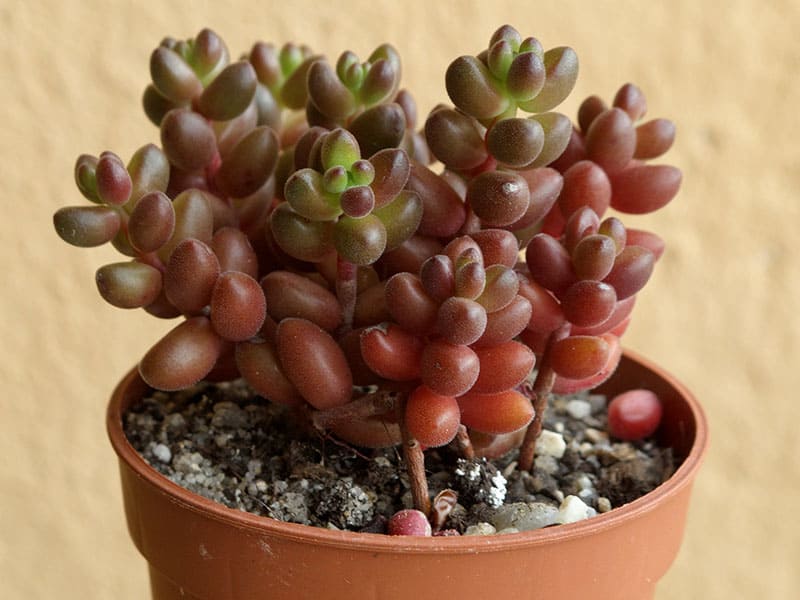
4. Maintenance and Propagation
Regular maintenance of Coral Beads is essential to ensure their health and vitality over time. One of the most important maintenance practices is the removal of dry or damaged leaves. This not only maintains the plant’s aesthetic appearance, but also helps prevent the spread of diseases and infections.
In addition, occasional pruning may be necessary to control the growth of Sedum stahlii and promote a compact and attractive shape. When pruning, remove excessively long or unruly stems or leaves, ensuring that the plant maintains its balanced appearance.
To propagate Coral Beads, there are two main techniques: cuttings and clump division. To propagate by cuttings, cut a healthy stem from the mother plant and let it dry out for a few days to form a bark at the cut end. Then plant the cutting in moist, well-drained soil and wait for it to take root.
Clump division involves separating a mother plant into several smaller parts, each with its own roots. This can be done carefully, using a sterilized knife to cut the plant into sections. Then plant the divisions in individual pots or directly in the ground, providing them with the same care as the mother plant.
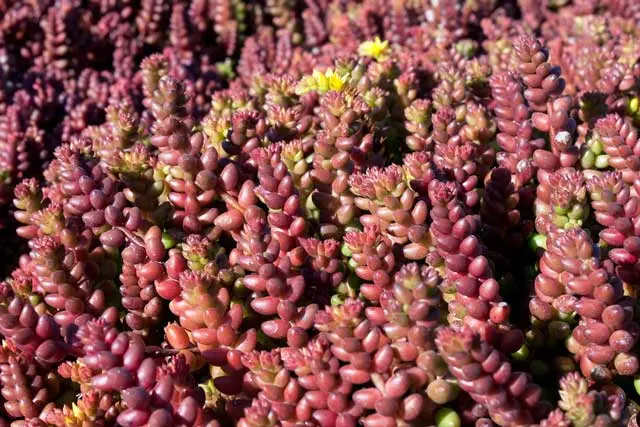
Conclusion
To sum up, here are the five main tips for caring for Sedum stahlii:
- Provide adequate sunlight, avoiding excess during the warmer months.
- Water sparingly, ensuring that the soil is dry before each watering.
- Keep the plant protected from extreme temperatures and cold drafts.
- Carry out regular maintenance, including pruning and removing dried leaves.
By following these tips, you will be providing the best conditions for the healthy and happy growth of your Sedum stahlii. We therefore encourage you to apply these guidelines to your own cultivation and enjoy the benefits of this charming succulent. With care and dedication, your Coral Beads will continue to thrive and brighten up your green space for many years to come.
Frequently Asked Questions
Can you put the succulent in the sun?
Placing the succulent in the sun is possible, but it is important to provide the right amount of sunlight. Direct exposure to the sun for long periods can cause damage to the leaves, such as sunburn. It is therefore advisable to place the succulent in a place where it receives indirect or filtered sunlight, especially during the hottest hours of the day, to avoid damage.
How to look after a Sedum Nussbaumerianum?
To care for a Sedum Nussbaumerianum, it is essential to provide it with direct or indirect sunlight for several hours a day, ensuring that the soil is completely dry before each watering. In addition, it is important to plant the sedum in well-drained and fertilized soil to promote healthy growth. Avoid overwatering to prevent root rot and keep the plant protected from extreme temperatures.
How to care for a Sedum plant?
Caring for a Sedum plant involves some basic practices, such as providing adequate sunlight, watering sparingly, ensuring well-drained soil and protecting the plant from extreme temperatures. In addition, it is important to carry out regular maintenance, such as pruning dry leaves and removing wilted flowers, to maintain the plant’s health and beauty.







